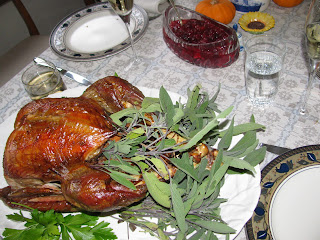Holiday Heritage Treats
There is something about the Holiday Season that brings back food memories from our childhood. We fondly recall family feasts in the past with memories of those specialties brought out each year to link us to our heritage. There would be the inevitable reminder that:” Grama Sofia or great aunt Hortense always made the best – (you fill in the blank) and always used the recipe her mother brought over from the ‘old country’.” In our house it would not be Christmas if I did not bake my mother’s favorite butter cookies, shaped as stars, bells, Santa or even camels. But my sons will always remember that the best ones were the hearts, because they were the biggest.
Those old recipes keep us linked to celebrations long ago and in the current age of multiculturalism avail us an incredible array of dishes. While many are associated with cookies or deserts, a treat at a friend’s house could be latkes for Hanukkah, those crisp fried shredded potato cakes, barely held together with a bit of flour and egg and topped with smoked salmon and a dab of sour cream. Another treat with a French heritage would be Bûche de Noël or Christmas log, the ultimately decorated jelly roll, made to look like a log with chocolate icing, sprouting meringue mushrooms.
Enthusiastic bakers, like my sister in law Joyce, spend the season baking goodies of different ethnic origins for their friends with those origins. Her awesome list last year included: Italian Panetone, Scandinavian Julekage, Serbian Kolach, Greek Christopsomo, Hungarian Makos es Dios Kalacs, English fruitcake and plum pudding in addition to German Anisekuchean and Lebkuchen. Since many of these are made with yeast dough that requires kneading in addition to allowing the dough to rise twice, this truly represents a labor of love for friends and family.
At our house another ethnic holiday treat is Latvian Pīrāgi. These are small crescent form rolls filled with a bacon/onion/caraway mixture. I can’t claim it to be my mother’s recipe, because it has undergone several revisions in my lifetime. However, I cherish those revisions since they represent special memories of people who suggested them. So, each time I make the dough and stir in sour cream and ground cardamom, I remember the time I learned to make Pīrāgi from my friend’s mother. The Latvian custom requires that you always find some insufficiency in your Pīrāgi as you offer them to others. Valija claimed that sour cream was her secret for Pīrāgi that never needed an apology because they were perfect. My friend’s father always ground the cardamom fresh when she baked and now as I add these to my dough, I remember them both, though they are long gone.
Latvian Pīrāgi
For the yeast dough melt ½ cup butter without browning, stir in 1 cup milk, 3 Tbls. sugar, 1 tsp. salt, ½ tsp. ground cardamom. The mixture should be lukewarm and not hot. Dissolve 2 packages yeast in ¼ cup water and wait until it starts to froth. Beat 2 eggs lightly and combine with the milk mixture and yeast in a large bowl. Beat in 2 cups all purpose flour, then stir in 2 Tblsp. sour cream and 2 ½ + additional cups of flour. Knead the mixture until a sticky dough is formed. Cover and set in a warm place to rise for about an hour. When the dough has doubled in size, punch it down, cover and let it rise the second time.
Meanwhile prepare the filling. Chop 2/3 lb thick lean bacon in ½ inch pieces. Cut 6 oz. Canadian bacon in small pieces. Chop 1 large onion in small, but not fine pieces. Fry the bacon pieces with stirring for a couple of minutes, then add the chopped onion and continue cooking on medium heat until the onion is translucent and much of the fat is rendered from the bacon. Stir in the Canadian bacon and cook for an additional 3 minutes. Remove all with a slotted spoon to a bowl, stir in ½ tsp. sugar, 1 tsp. caraway seed, ½ tsp. pepper. Allow filling to cool before assembling Pīrāgi.
Remove handfuls of dough on a floured board and with floured hands fashion smaller pieces in flat rounds about 2-3 inches. Place a teaspoon of the filling in the center and fold the dough over making a pillow and sealing the edges with a glass by cutting off the extra dough. Vain cooks make these small, impatient cooks make them larger. Place each dough pillow on a greased cookie sheet, cover lightly with a dishtowel and allow the dough to raise for about 20 minutes. Brush with an egg wash (slightly beaten egg with 1 Tblsp. water) and bake at 420 degrees for 8 minutes until lightly browned.
You will find that these are addictive and can be eaten at breakfast, lunch, dinner or anytime in between as my granddaughters have shown each time I make them.
(I. Winicov Harrington lives in Waldoboro and is the author of “How to Eat Healthy and Well for Less than $5.00 a Day: the Smart-Frugal Food Plan”; website: www.winicov-harrington.com)






